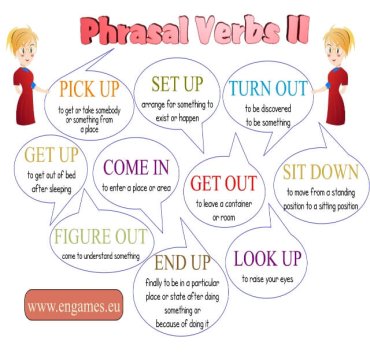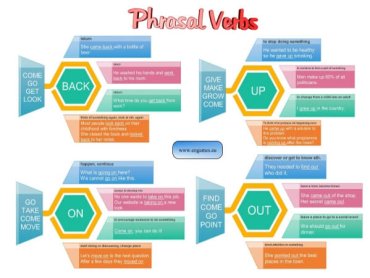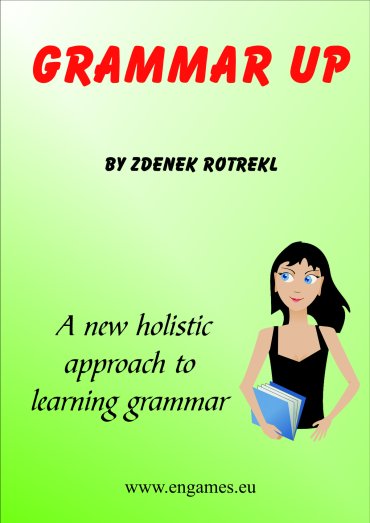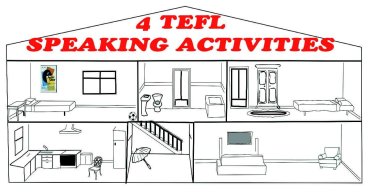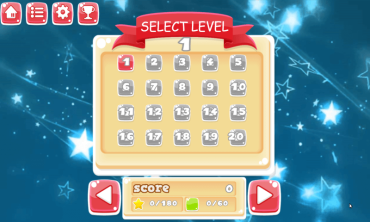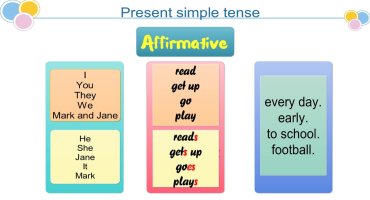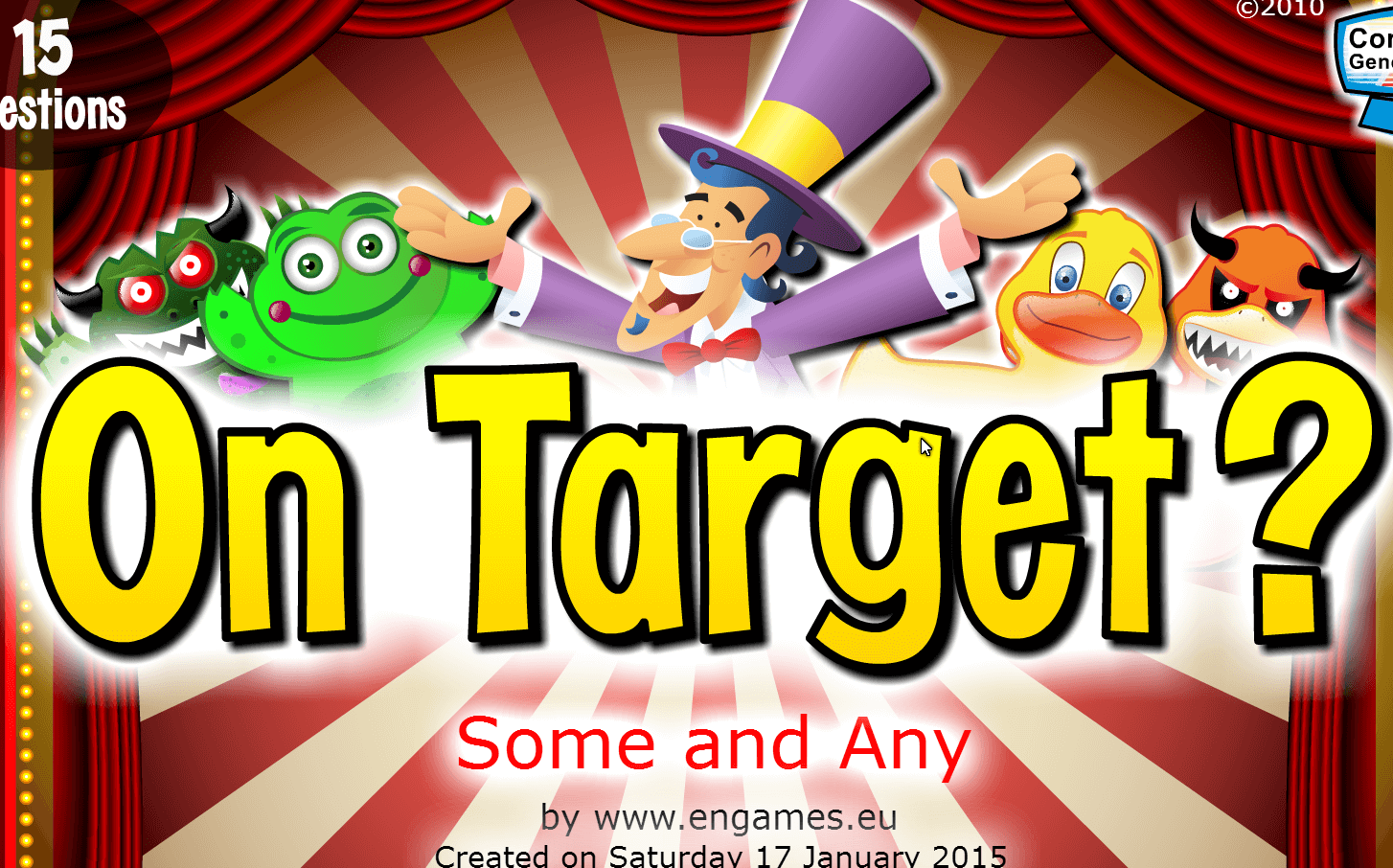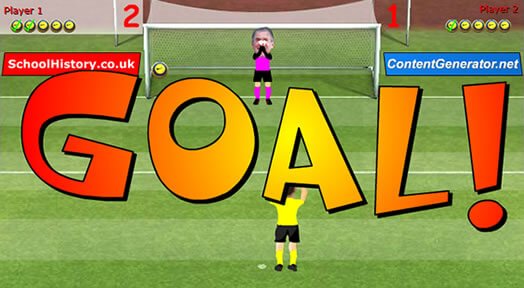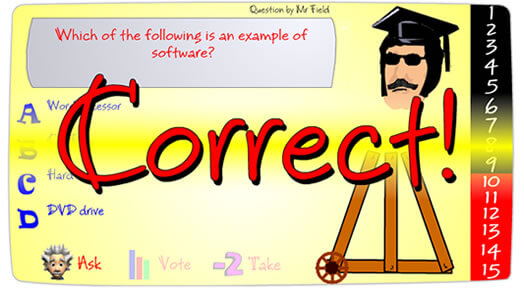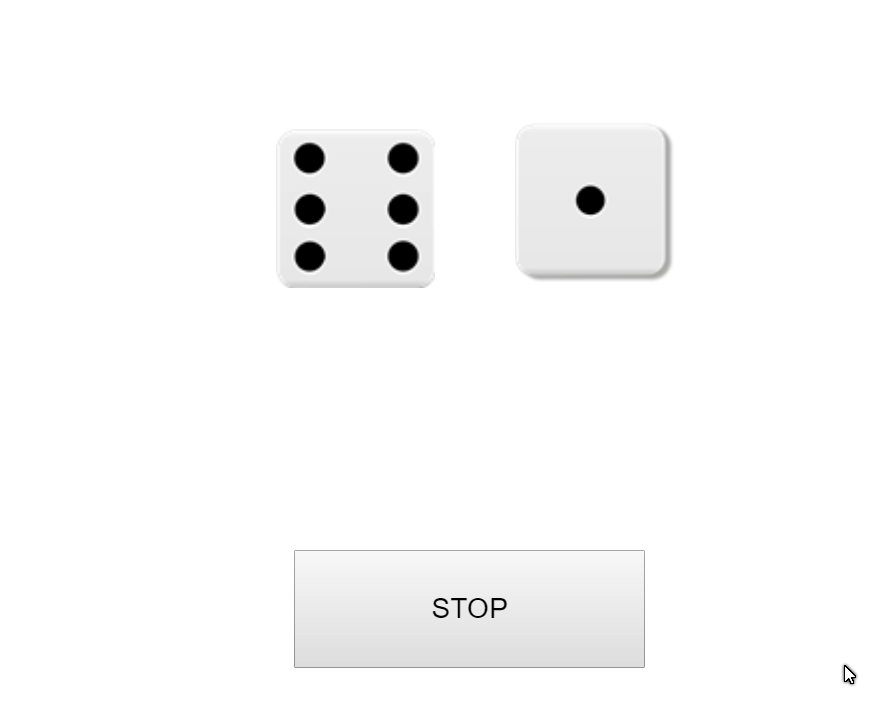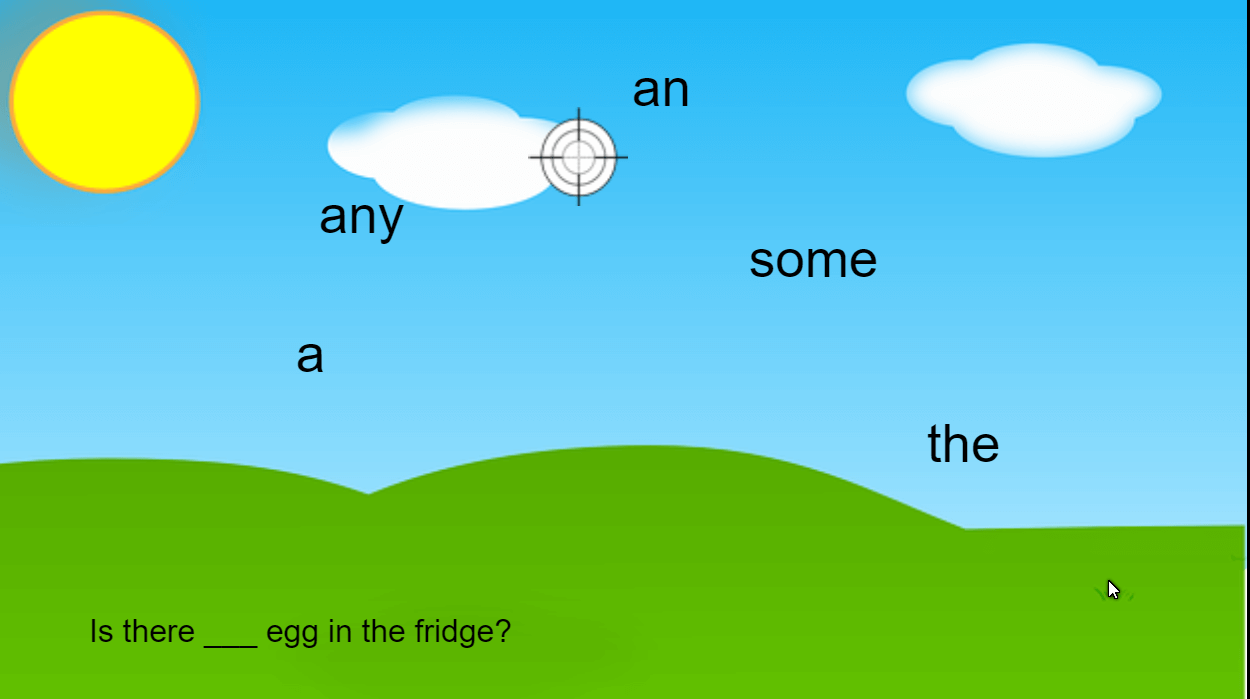Yesterday I published a post in which I taught 16 phrasal verbs which belong among the 50 most frequent phrasal verbs in English. In this post I am going to introduce 10 more phrasal verb which belong into the same category.
 Before you start learning anything, take the following quiz. Read the questions and choose the best option to see how many phrasal verbs you already know. If you manage to score 20 points, you can leave this page because you know all the phrasal verbs, I am going to teach here.
Before you start learning anything, take the following quiz. Read the questions and choose the best option to see how many phrasal verbs you already know. If you manage to score 20 points, you can leave this page because you know all the phrasal verbs, I am going to teach here.
<!– wp:more –>
[WpProQuiz 15]ADVERT:
[showmyads]
[WpProQuiz_toplist 15]
Phrasal verbs – infographic
Study the verbs in the following infographic:
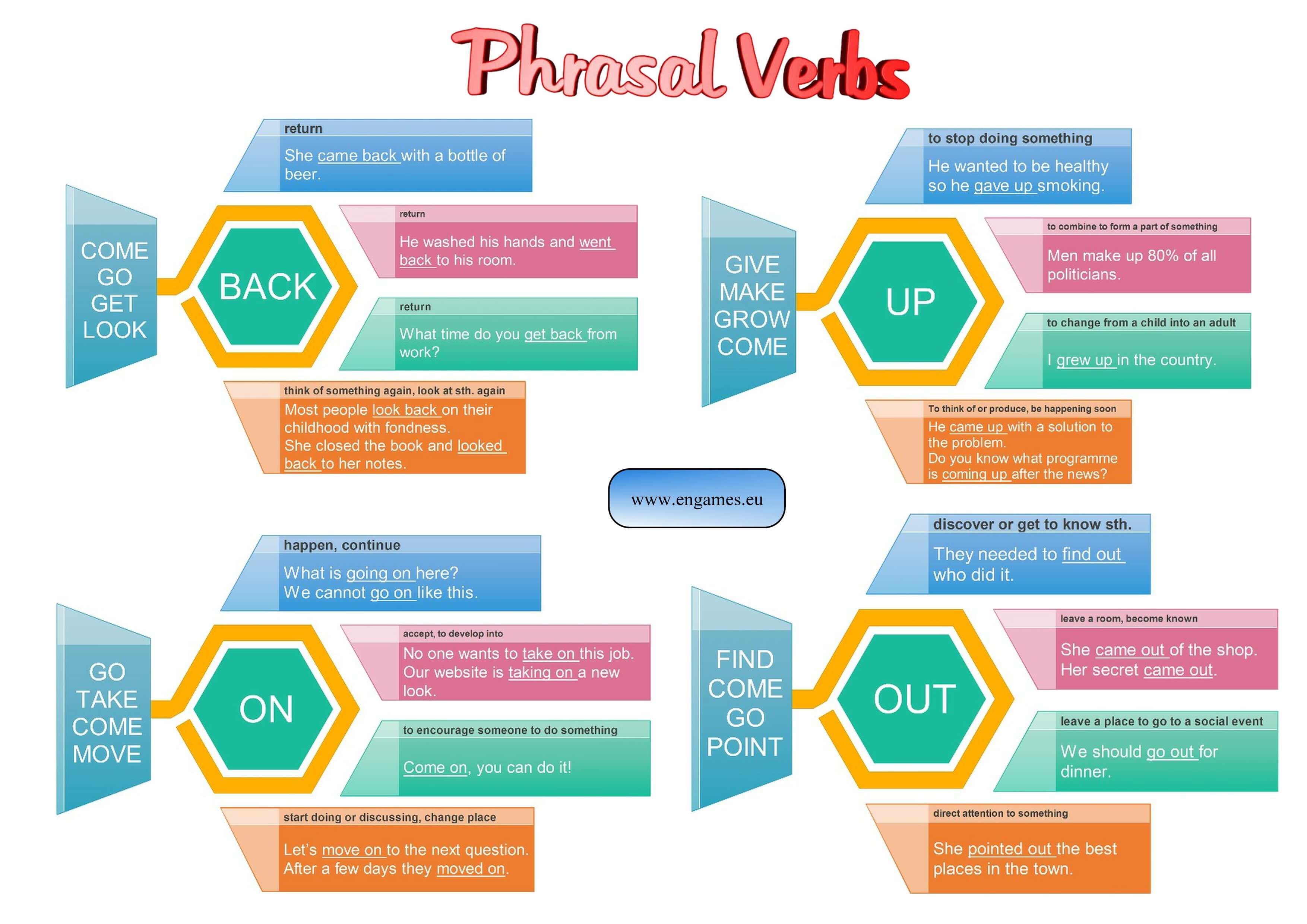
The verbs are organised according to the particles. First, read the infographic and then cover the definitions and try to remember the verbs and particles.
You can print the infographic here:
Phrasal verbs I – infographicPhrasal verbs – games
The first game is called Penalty Shootout. In this game you should choose the correct answer and then try to score a goal. Good luck.
As the game is in Flash, it will only play on desktop computers.
ADVERT:
[showmyadsa]
To play the game on the full screen click the button below.
Penalty game – full screenThe second game is in Flash, too, and it will play only on desktop computers. It is called On Target, and your task is to choose the correct option and then shoot all the bad cows and ducks. You can shoot one of the bottles on the wall to get a bonus. Enjoy.
To play the game on the full screen click the button below.
On Target game – full screenIf you like this post, please tell your friends and share. Thank you.
Paul Nation in his book What Should Every EFL Teacher Know suggests that every language course should consist of four strands: Vocabulary development, Extensive input and output, grammar explanation and fluency development. By giving these four strands equal amount of time in EFL lessons, students will learn the foreign language.
<!– wp:more –>
 In this post, I will concentrate on speed reading which belongs into the fluency development. If you cannot use the language with some degree of fluency, you cannot claim (and feel) that you know the foreign language. Moreover, fluent reading is essential for successful comprehension. And to achieve it, you need to train it.
In this post, I will concentrate on speed reading which belongs into the fluency development. If you cannot use the language with some degree of fluency, you cannot claim (and feel) that you know the foreign language. Moreover, fluent reading is essential for successful comprehension. And to achieve it, you need to train it.
In this post, you will find a short game for elementary students of English to measure their reading speed. In the future, I plan to publish several more speed reading texts for elementary students, and a mobile phone app.
ADVERT:
[showmyads]
Speed Reading
encourages guessing from context and ignoring unknown words.” (Paul Nation)
To practise this skill, I prepared the following game. Click the button below and start reading as quickly as you can. When you finish, click the orange button “FINISH”, and answer the comprehension questions. Answer the questions as well as you can because your score will be reduced if you make a mistake.
Speed ReadingRead the text just once!!! If you do it twice or several times, your results will go up and they will not show your real reading speed and comprehension.
Please, share your results in the comments below. You do not have to sign your results, just write the number of words per minute, you have achieved.
I hope you find this activity interesting and useful. Please, let us know.
Ever since I was a boy I wanted to write and publish a book. It took over thirty years for my dream to come true.
In this post I would like to introduce the three books for learners and teachers of English which I published.
<!– wp:more –>
ADVERT:
[showmyads]
Grammar Up!!
 Grammar Up is a book for learners of English who would like to improve their Grammar.
Grammar Up is a book for learners of English who would like to improve their Grammar.
This book contains 17 short texts which you read and then you check your comprehension.
In the second step you see the text again but this time half of every second word is deleted. So for example you would see a sentence like this:
In t____ second st____ you s_____ the te______ again b____ this ti_______ half o____ every sec____ word i___ deleted.
Your task is to read the text again and complete it.
In the third step, you see a text in which all the verbs are in the infinitive form, all the prepositions are replaced by a dash (-), and all the articles are replaced by an asterisk (*). The text then looks like this:
– * second step you SEE * text again but this time half – every second word DELETE.
Your task is to read the text again and add all the missing words and forms. It might not be a bad idea to write out the text as well.
I think this kind of exercise is very useful and it will help you improve your grammar.
You can find more information about the book Grammar Up and a sample chapter here.
Grammar Up at Amazon444 Grammar Conversations
 444 Grammar Conversations is a book for teachers of English. In this book you will find over 450 questions which are divided according to the grammar used there.
444 Grammar Conversations is a book for teachers of English. In this book you will find over 450 questions which are divided according to the grammar used there.
My aim was to create a book with a set of questions for each grammar point. The teacher just comes and copies the questions and hands them to students. Students work in pairs and ask and answer the questions practising the grammar.
Here is a set of questions for present simple tense (not included in the book):
1. Where do you live?
2. What do you do?
3. What do you do at the weekend?
4. What food do you like?
5. When do you get up?
6. What music do you like?
7. What do you do after school?
8. What does your mother do?
9. What does your father do?
10. When do you go to bed?
11. What do you do on your mobile phone?
12. What do you want to do on holiday?
13. Do you like English?
14. What sports do you play?
15. Do you like English?
16. What do you do with your parents?
High School Stories
Here you can see a part of the story called Two Dates:
High School StoriesCategory: English games
I have just published a new book. It is called Grammar Up.
Grammar Up is a new, holistic approach to teaching and learning English grammar.
<!– wp:more –>
When you take English in school, you learn one piece of grammar at a time. After a while, you become confused by all the rules, and you forget most of them.
Native speakers don’t know the rules for the present simple or present perfect tense. They use them.
ADVERT:
[showmyads]
With Grammar Up, you work in the same way. The grammar points are not explained — you have to use them. And when you use the grammar, you learn it.
How to use this book?
There are 17 short texts. First you have to read the text and answer the comprehension questions. You can either write your answers on a piece of paper or you can remember them. Check your answers on the next page.
This comprehension exercise is followed by the first Grammar Up exercise. You will see the same text you have read, but this time half of every second word is deleted. The text looks like this:
You wi_____ see t_____ same te_____ you ha_____ read, b_____ this ti_____ half o_____ every sec_____ word i_____ deleted.
Try to read the text and complete each word. It is ideal to read the text aloud this time. If you are not sure how to complete a word, turn back to the original text and find the correct answer.
This exercise is followed by the second Grammar Up text. This time you see a text in which all the verbs are in the infinitive form, all the prepositions are replaced by a dash (-), and all the articles are replaced by an asterisk (*). The text then looks like this:
You SEE * same text you READ, but this time half – every second word DELETE.
Your task is to read the text again and add all the missing words and forms. It might not be a bad idea to write out the text as well.
I hope you like this book and that your facility with grammar goes up!!!
Grammar up in Amazon storeGrammar up – example text
Some posts are easy to write and some take a lot of time to create. This one is the latter case. It took me three months to draw and rewrite the Sherlock Holmes story for pre-intermediate students.
<!– wp:more –>
In this post, I would like to share with you a graded comic called Sherlock Holmes – Diamond Secret. The original comic is published by digitalcomicmuseum.com under CC0 license. I took the original story and copied only the outlines and I simplified the dialogues. You can read the resulting story here.
Sherlock Holmes – vocabulary
The correct answers are here:
ADVERT:
[showmyads]
1. Secret
2. Anchor
3. Smuggler
4. customs
5. expect
6. diamond
7. wonder
8. button
Sherlock Holmes – video
I made the comic black and white to make it simple to print. I know it does not look as well as in colour, but it is much cheaper to print enough copies for the whole class.
You can download the pdf file here:
[sociallocker]
Sherlock Holmes – pdf file [/sociallocker]
A few words on reading
By working on speed reading, your students will improve their speed of reading and they will improve their comprehension. I play the video first in the speed it is, then I increase the speed to 150% and I ask the students to read the story again and I play it at 200% speed.
Extensive reading is a perfect means of refreshing vocabulary knowledge and creating collocations in one´s mind.
I recently created my first app for mobile phones and it became a hit among my students. Already 85 students downloaded the game and they are working hard on learning the new vocabulary.
<!– wp:more –>
However, as this app was just for Czech students, I wondered whether I could offer it to people from around the world. And after a while I created a similar application but this time you can learn 190 most frequent irregular verbs in English.
ADVERT:
[showmyads]
One hundred and ninety irregular verbs are nearly all the irregular verbs there are in English. Those that are not included are so rare that you will probably never meet them in real life.
How does this app work?

Click PLAY and you will see the followin screen:
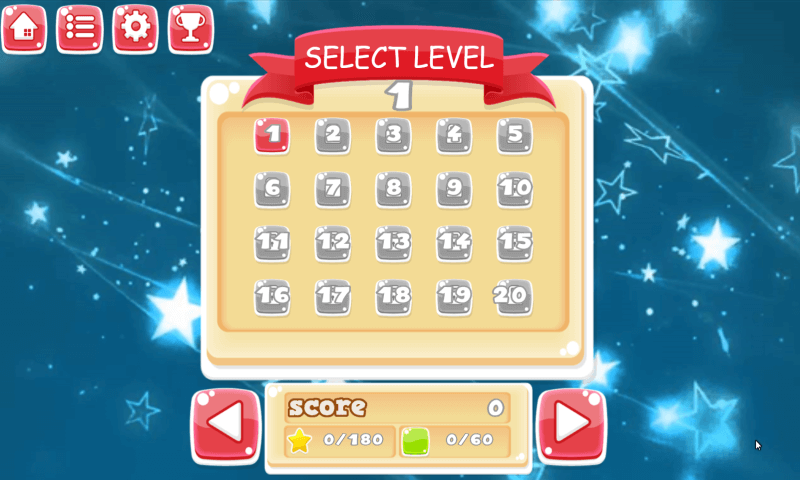
It shows the levels you have finished and the levels you can play. You can play all the green and red levels. The white levels are not available till you finish the ones before.
Once you click the level you want to play, you will see the following:
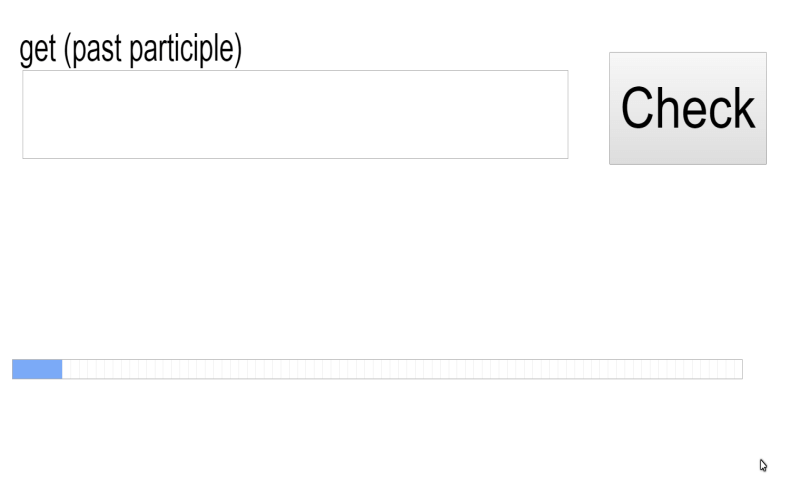
At the top of the screen there is an irregular verb and in the brackets there is written which form you should write. Type the approprite form and click CHECK or ENTER. If your answer is correct, green word correct will appear under your answer. If it is not correct, you will see the red word WRONG and the correct answer below it.
If you answer correctly, the verb will not appear in this level again. If you make a mistake, the word will get repeated once or twice.
Each level contains between 15 and 75 words to learn.
Buy and Download the AppYou can find the app in the Google play store by writing 190 Irregular verbs.
I hope you will like this game and that it will help you learn all the irregular verbs.
We live and teach in the communicative era. However, the textbooks offer very few speaking activities where students could practise the language they have learnt. That is why I decided to share several speaking activities with you.
<!– wp:more –>
In this post there are two speaking activities to practise describing a house using the phrases THERE IS/ARE, a simple communicative strategy that helps the learners speak more and a nice set of activities to practise the present simple tense.
ADVERT:
[showmyads]
Describing a house
For the Draw and Describe activity print the following worksheet. Each student needs a piece of paper with two houses (one sheet per student).
Draw and Describe worksheet
Students work on their own and draw between 10 and 15 things into their houses. Just remind them that they need to draw things they can name or describe.
Then students work in pairs. They mustn´t show their picture to their partner. They describe their house and the things they have drawn. Their partner listens and tries to draw the things into their empty house.
When they finish the students swap roles. In the end they compare their pictures.
The other activity is called Find the Difference. Print the following worksheet.
Find the Difference worksheetStudents work in pairs. Each gets one half of the worksheet. One has the part A and the other part B. Students mustn´t show their picture to their partner. They describe the pictures and they try to find as many differences as they can.
In the end they show their picture to their partner and they see whether they managed to find all the differences.
SA + EI
However, it often happens that students ask and answer the questions, and they finish the conversation in a few seconds. To prevent this, I found the following communicative strategy: SA + EI.
It might sound scary, but it is really simple. If someone asks you a question, you give a short answer (SA) and some extra information (EI). And the student who asked the original question uses the extra information to ask another question.
For example:
A: Where do you live?
B: I live in Brno. It is a beautiful city.
A: What are the most beautiful places there?
B: I like Spilberk. It is a castle in the centre of the town.
Using this simple strategy, each conversation gets three times longer than before.
Here is a set of questions you could use for this activity:
a) Were you on the internet yesterday?
b) Did you watch TV yesterday?
c) What are you going to do this weekend?
d) Do you like school?
e) Did you learn English yesterday?
f) Who did you speak to yesterday?
Present simple tense – speaking
Print the following worksheet once and cut it. Place the 14 pieces around the classroom.
Daily Routine speakingPrint the following text and give it one copy to each student. Tell them to walk around the classroom and find who each paragraph is about. They write the number at the end of the paragraph.
Present simple textThe correct answers are 8,3,11,1,2.
Finish this part after about seven minutes. Tell the students to turn the paper. Give each student an uncut copy of the worksheet Daily Routine Speaking. Students now work on their own and they write a short paragraph about one of the series of pictures. Ask students to use at least two negative sentences, even though they are not necessary.
Students work in pairs. They read their description and their partner guesses who they are talking about. Students swap pairs at least three times.
In the last phase,students choose a series of pictures and just say what the person does every day and their partner must guess who they are talking about. In this part they speak without any preparation.
Mobile phones are bad! Students spend hours on mobile apps and they do not learn! What can we do about it?
I tried to do something about it. I prepared a responsive website for my students to learn on their mobiles and … they didn´t come.
<!– wp:more –>
But then I created my first android app and everything changed. I became a school hero and students have been showing me their mobiles with my app on them.
And I wondered: Why do they suddenly learn on their mobiles?
ADVERT:
[showmyads]
The answer is simple. Data is expensive and when the students decide to use the internet, they do it to socialize. And let´s be honest, my static website is no competition for sites like Facebook or Instagram.
But as the app does not require the internet connection, it sits in their mobile phones and waits for the moment when the students disconnect. And then the students start to play the vocabulary game. Several factors play their role here. First, students can use their mobile phones, second, no one blames them that they do not learn, and third, they make their parents and teachers happy by playing a mobile app on their phone.
The application – explanation
It is quite simple. There appears a word on the screen in students´ MT and they have to type the word in English. If they answer incorrectly the correct answer is shown, and the word gets repeated after a while.
There are sixty levels and students get points and stars for their performance.
You can download the mobile app at Google Play. It is called “Top 450 slovicek v aj final“.
In my application they learn 450 most frequent words in English. You can see the screenshots here:
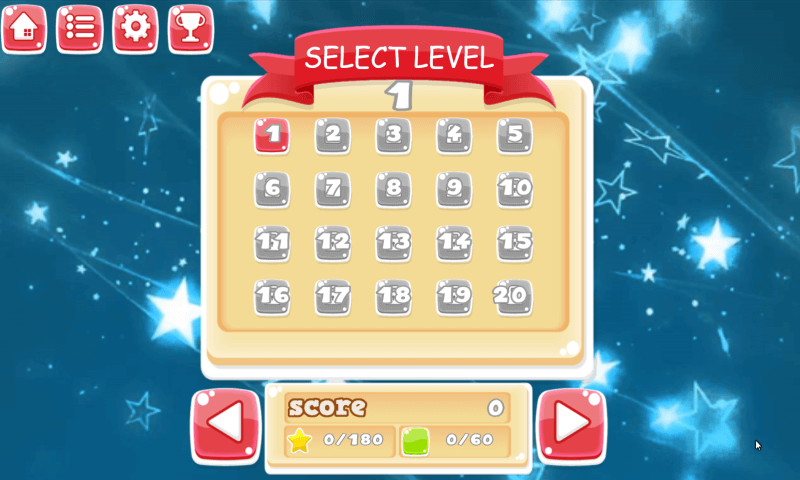
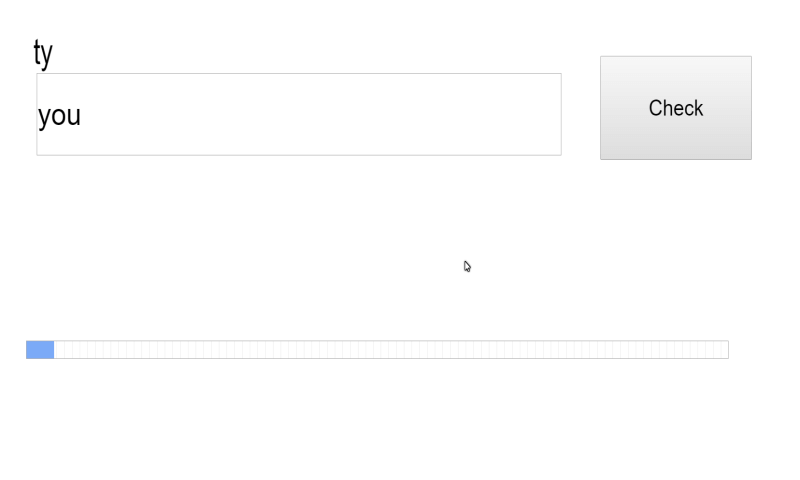

My first mobile app – Free app for you
I will do it for free.
The only thing I want is, that I may later use the text file in any way I want.
Category: English games
In this post I would like to share with you the best activities I know to teach the present simple tense.
To achieve this, I will recycle some of the materials I have already and shared here. However, there are several new materials (for example the infographic) which I designed just for this post.
<!– wp:more –>
ADVERT:
[showmyads]
I hope you find these materials useful and you will use them in your lessons.
Present simple – song
Here are the lyrics to complete:
Present simple songPresent simple – form
The aim of the following activity is to sensitize students to the forms of the present simple tense and to improve their pronunciation.
Play the following rhyme and ask the students to listen and then repeat it. In the last phase, students should read it on their own.
It is a good idea to ask your students to memorise the rhyme.
Present simple – infographic
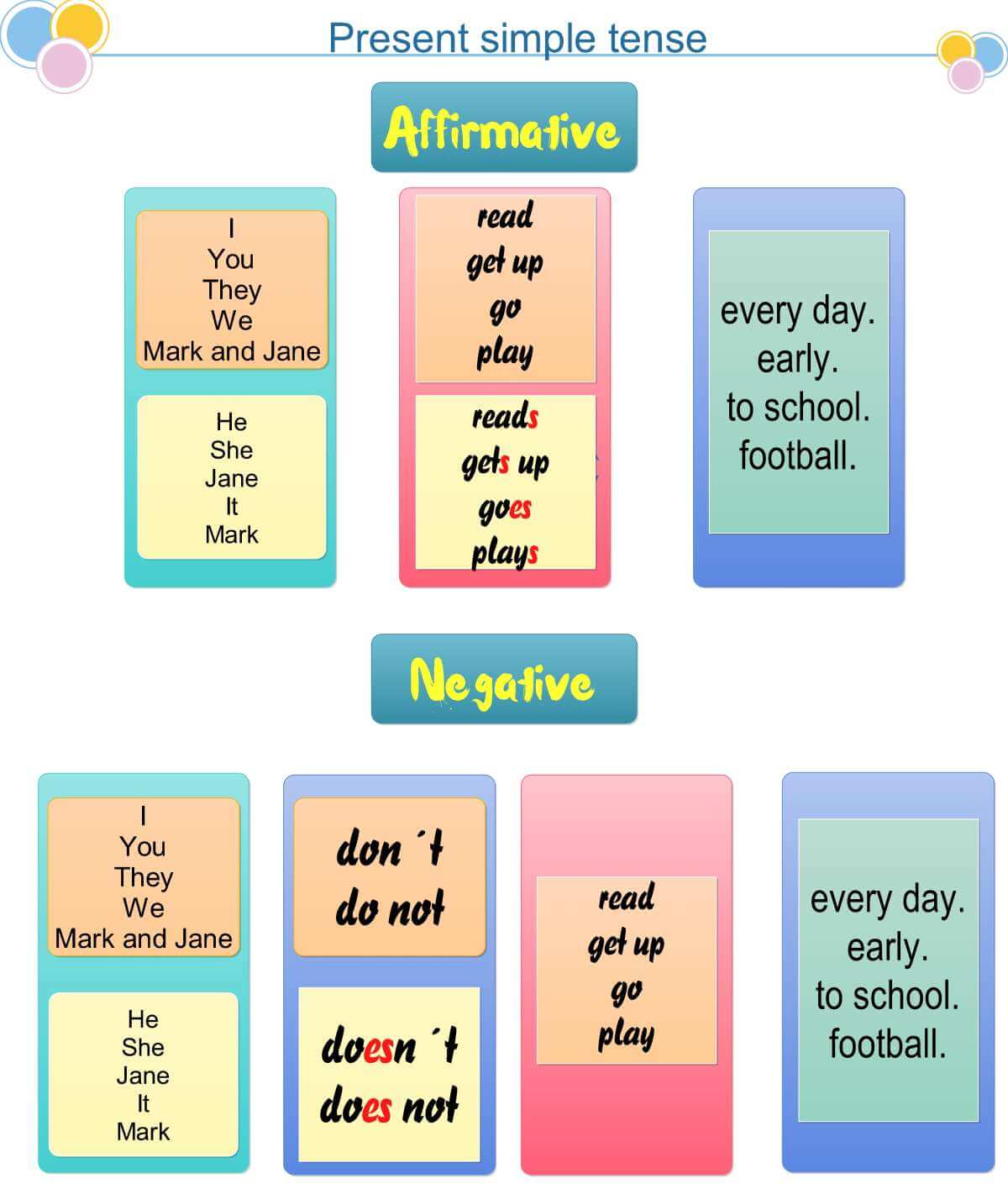
Print the picture for everyone and explain that students should use the ending -s with the third person singular.
You might want to teach the correct spelling of the -s ending, but I do not think it is a good idea. I believe, it is better to expose the students to the language now.
Present simple – story
Print the worksheet, so that every student has a copy. It is best to print the cards on a stronger paper. Ask the students to cut the cards and go through the cards and translate the expressions into the students´ MT. Students write the translation on the other side of each card.
Then students learn the new words using the flashcards.
Once they learn the words, play the following British Council video and ask the students to do the accompanying tasks. I think that tasks 1 and 4 are especially important.
ADVERT:
[showmyadsa]
Collect the texts your students write and correct them to see what problems your students have.
Present simple – grammar exercises
It is a good idea to teach the most frequent verbs in English here. Here are the flashcards for the most frequent verbs in English:
Most frequent English verbsFor students who do not use articles in their mother tongue it is incredibly difficult to learn to use them correctly in English. In fact, it is very difficult to teach them use the articles at all. That is why I often spend a lot of time teaching definite and indefinite articles in English.
<!– wp:more –>
In this post I will sum up the materials and experience I have gathered to teach the difficult grammar. You will find here an infographic, an original exercise and an interactive quiz.
Articles in English – infographic
ADVERT:
[showmyads]

Print the following infographic and explain the usage of articles in English to more advanced students.

Here is a short explanation of the infographic. If a student decides what article they should use they should start from the point in the upper-right corner. Find a noun and the place where the article should go. Then go to the segment 1 and go around till you find a rule to apply. Once you apply a rule, move on in the text. If you get to number 8, use the indefinite article.
Another explanation goes like this:
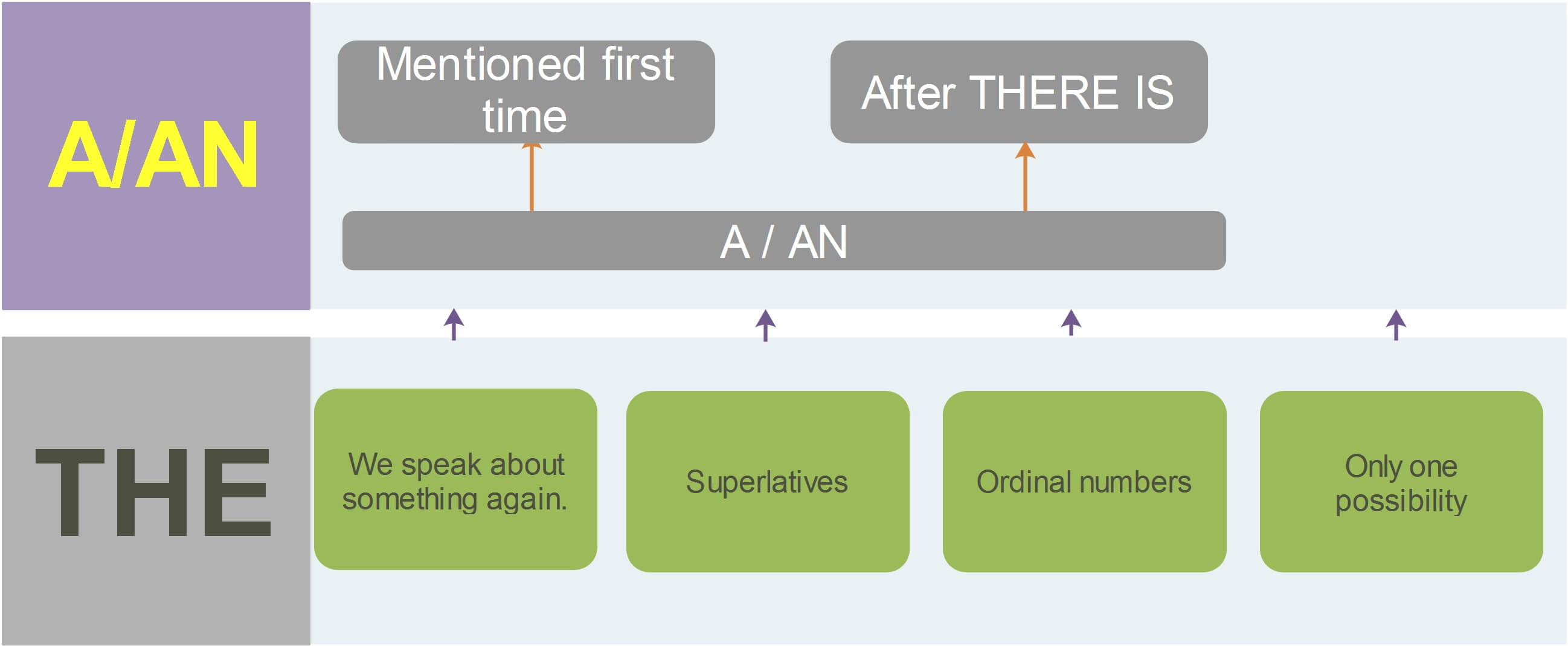
The basic rule is that you should use an article in front of each noun. If you speak about something for the first time you should use the indefinite article A/AN. The article AN is used if the words starts with the letters A, I, O or E. If the word starts with U or H you have to pronounce the word. If the pronounciation does not start with /j/ or /h/ then the article AN is used again.
We do not use the indefinite articles in front of plurals or uncountable nouns because the meaning of the indefinite article is one.
If we speak about the same thing again we use the article THE and it does not matter whether the thing is countable or uncountable.
Articles in English – worksheet
Articles in English – quiz
[showmyadsa] The following quiz can help your students practise the articles either at school or at home. The quiz consists of two parts. In the first part, students should click where the articles belong. In the second part, students have to write the articles into the gaps. The students will be rewarded with a game after each part of the quiz they pass. The quiz is in HTML5, so it will play on all desktops and mobile devices. Articles – quiz
Category: English games
Elementary students are taught that there is very little difference between the words MUST and HAVE TO. Little as it may be, it exists. And in this post I would like to give you several rules which will help you decide which one is better in the given sentence.
<!– wp:more –>
ADVERT:
[showmyads]
In this short post you will find an infographic, two online quizzes and a worksheet.
Must or Have to? – infographic
However, in this post I will give you a different explanation. It is based on the explanation given by Jim Scrivener in his book Teaching English Grammar. There he states 5 rules which should help learners decide which verb to use. The rules are summed up in the following infographic.
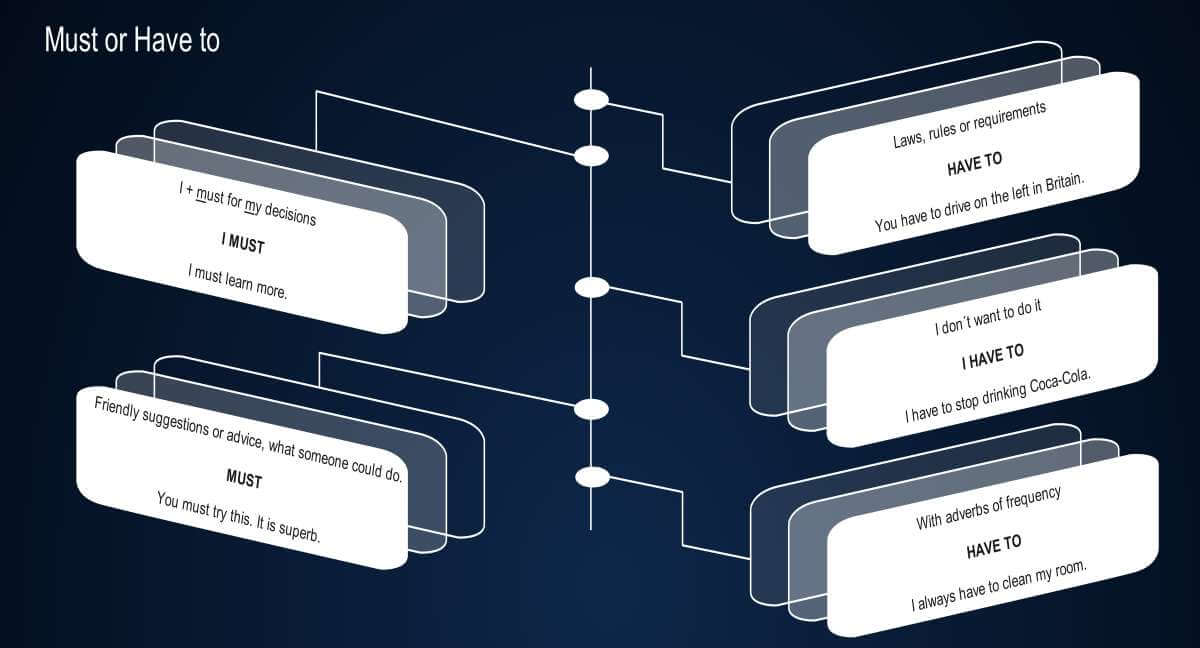
Remember, that you can often use the verb HAVE TO instead of MUST but it may not sound completely natural.
Must or Have to? – Quizzes
If you do not want to use the online version, here is the paper version of the same quiz:
Must or Have to -paper quizMust or Have to – Links
Must and Should – this is one of the most popular posts at this site.
There is a nice board game to practise the verb Must here.
At https://engames.eu/past-tense-of-modal-verbs/ you can find the past tenses of the modal verbs.
And there is a great infographic explaining the usage of the verbs HAVE TO, DON´T HAVE TO and MUST here.
ADVERT:
[showmyads]
The Snowball method is quite simple. You have to work for 10 days in a row. On the first day, the computer teaches you 12 verbs. On the second day, the computer gives you the 12 verbs from the previous day and it adds 12 new verbs. It goes on like this till the day six. Each day there are 12 new verbs and all the verbs from the previous days are repeated. On day 7, no new verbs are added and the 12 verbs from day 1 vanish. In this way, on days 7 to 10, no new verbs are added, and the oldest verbs are deleted. Thus, each verb is repeated at least 6 times.
Moreover, if you make a mistake, the verb is repeated again until you get it right or until you make 3 mistakes.
Irregular verbs – infographics
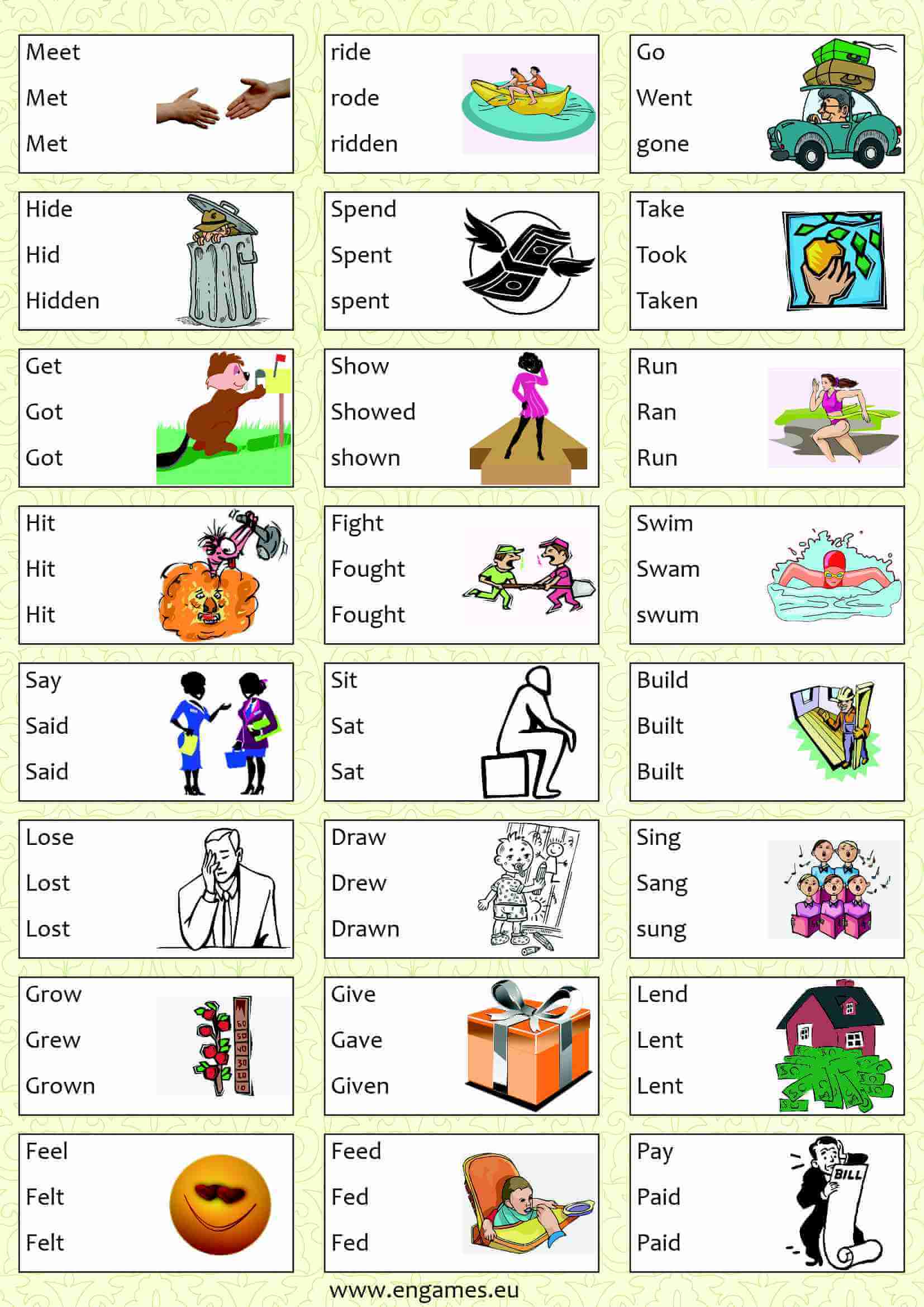
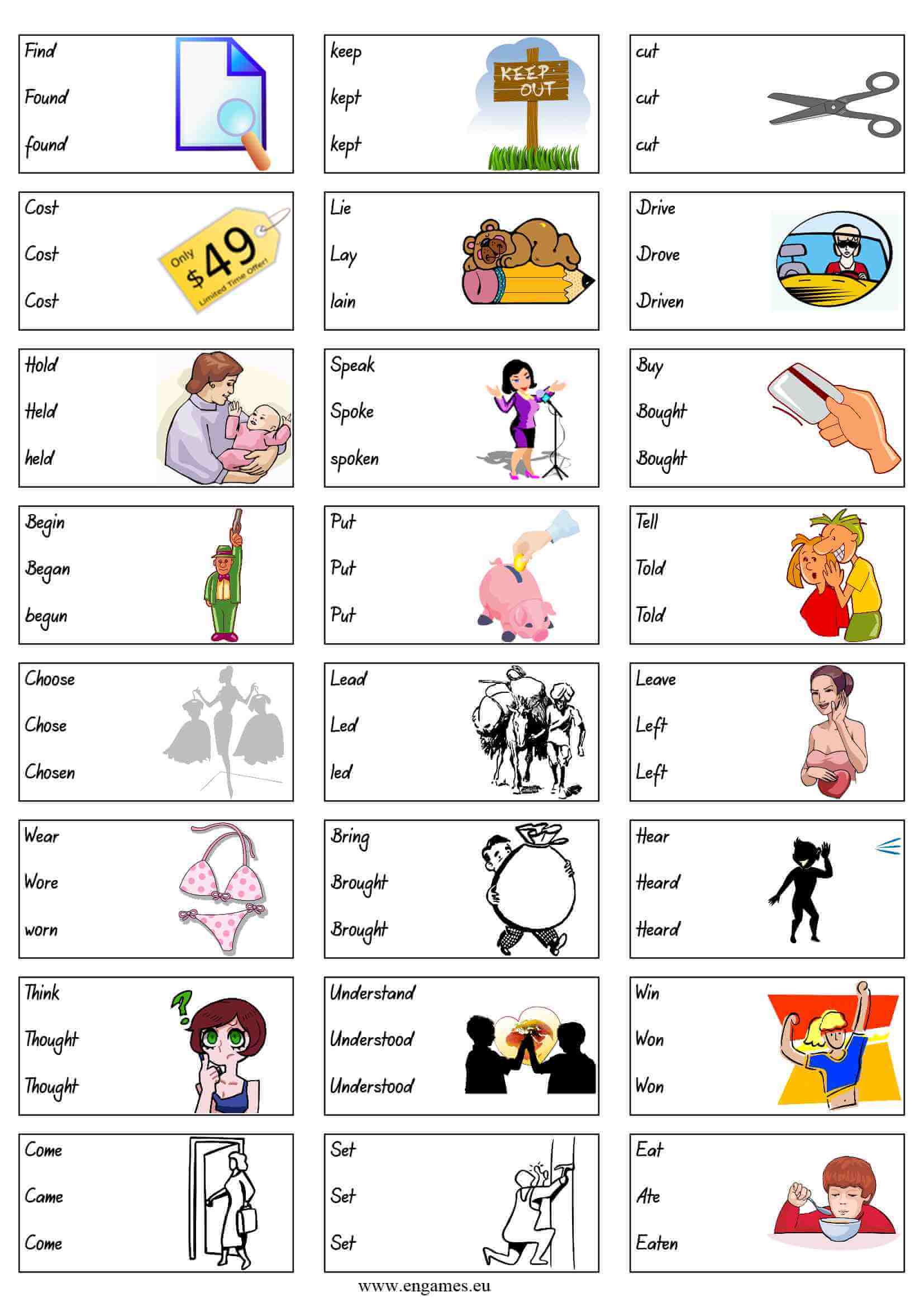
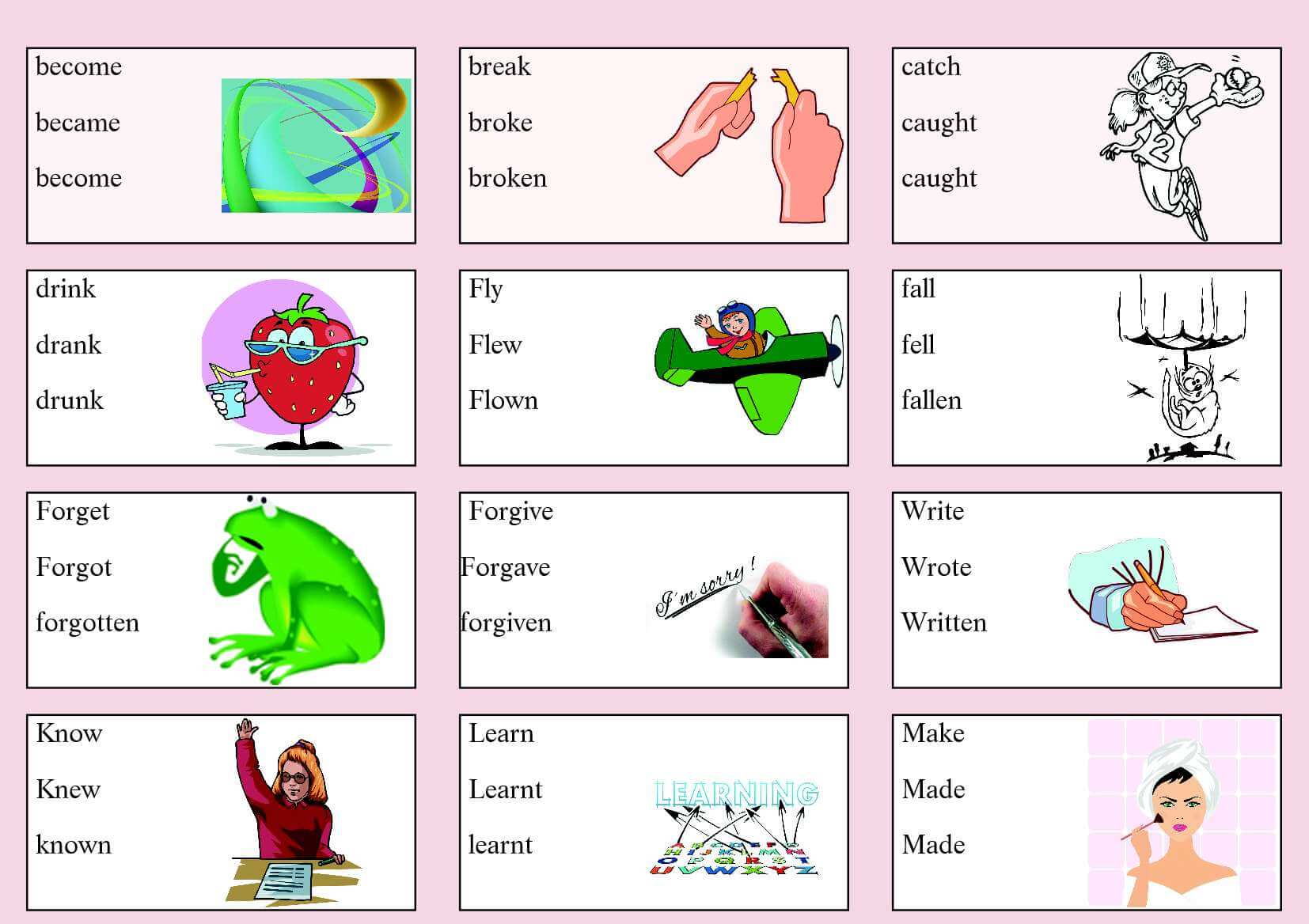
Irregular verbs – Snowballs
Do Snowball 2 the next day. Then do Snowballs 3-10 one each day. Snowball 1 – full screen Snowball 2 – full screen Snowball 3 – full screen Snowball 4 – full screen Snowball 5 – full screen ADVERT:
[showmyadsa] Snowball 6 – full screen Snowball 7 – full screen Snowball 8 – full screen Snowball 9 – full screen Snowball 10 – full screen
Snowball method
This means that each word gets repeated at least six times and if you do not know it, it gets repeated more frequently.
As the answers are evaluated by a computer, DO NOT USE CAPITAL letters and divide the words with a comma (no pause after the comma).
ADVERT:
[showmyadsa]
In this quiz you can practise the irregular verbs. The quiz consists of two parts. In the first part, you should write the past tense and the past particples of the verbs. In the second part, you have to drag the correct verbs into the sentences.
Irregular verbs – quizHere, your task is to click the correct past tense and past participle. While the first round is easy, the others are very difficult indeed.
ADVERT:
[showmyadsa]
Irregular verbs – games
You can test your knowledge of the past tense here.
Irregular verbs Quiz
[showmyadsa] Practise the irregular verbs in the Half a minute game:
Irregular verbs Half a minute
The following online quiz consists of two parts. In the first part you should match the irregular verbs and their meanings, and then complete the sentences with an appropriate irregular verb in the past tense.
In the second part the you should drag the irregular verbs to the appropriate spaces in the sentences.
This game is called Goose Science Quiz, and your task is to click the dice in the upper right hand corner and then answer the questions. If you manage to get to the finish first, you will win the game.
Goose Quiz on irregular verbsCategory: Grammar Games
In the first part of this quiz,you should write correct sentences about the pictures using HAVE GOT.
In the second part of the quiz you should first match the pictures and the words and then write them. In the last part of the quiz you have to write the correct answers.
ADVERT:
[showmyadsa]
Have got online quiz – full screen
Category: Grammar Games
The best way to remember the verb patterns is by using them. Try the following quiz.
ADVERT:
[showmyadsa]
To display the quiz on full screen click the button below.
Gerund or infinitive? – quiz
This game is called On Target, and your task is to choose the correct option and then shoot all the bad cows and ducks. You can shoot one of the bottles on the wall to get a bonus. Enjoy.
Gerund or infinitive – On target game
Category: Grammar Games
The following quiz can help you practise the difference between present continuous and BE GOING TO. In the quiz, you should complete the text using either present continuous tense or BE GOING TO form. You will be rewarded with a game if you pass the quiz.
Future arrangements – quizTry the following quiz to practise WILL:
Category: Grammar Games
Practise the usage of the words FEW and LITTLE in the following quiz.
You can take the quiz on the full screen by clicking the button:
Few and little – full screen
Choose the correct form: either HOW MUCH or HOW MANY. This game is called En Garde and your task is to answer correctly and then inflict as much damage to your opponent as possible.
This game is called Penalty ShootOut. If you choose the correct answer you are given a chance to kick a penalty.
Category: Grammar Games
The following quizzes are not for beginners. They are for students who can understand the text and decide which form is correct in the given context.
Quiz 1 ADVERT:[showmyadsa] Quiz 2 Quiz 3
Comparatives and superlatives – video
Category: Grammar Games
ADVERT:
[showmyads]
Category: Grammar Games

